Introduction

© 2005 cockroach3
We are the cockroach group, and project that we are presenting here is called an ecobottle investigation. In our class we are doing ecobottles to learn more about what scientists have to do in their everyday life. Also it makes us better observers and more prepared in daily life when we get older if we become scientists. What we learned from this is what I just explained. But there are more things we learned from this project, like how the terrestrial, decomposition and aquatic sections work as their own environments and how they interact together.
Procedure
- First we got five bottles, and drew lines with sharpies for where we were to cut. We cut them according to size.
- Then, we started with the Aquatic section. We filled it with white sand, large pebbles, snails, and green plants. We drilled a hole through the cap of the decomposition to let the water drain out.
- After that, we proceeded to the decomposition section. We filled that with compost, and apple slices. Before we continued onto the terrestrial, we drilled a hole through the cap of it, to let the water through with a straw.
- In the terrestrial section we put soil, basil seeds, and garden beans. Later, on October 3, we added 6 crickets at 1:20 pm.
- According to the research we did on crickets and what they eat, it was said that crickets paper so we added paper for the crickets to eat.
- Then, at the very top, we have a top of a bottle, with a cap with small holes in it to allow us to water the terrestrial section.
Hypotheses
We have two sets of hypotheses developed by different group members. We have grouped them according to the section of the ecobottle that they are about. See below!
Aquatic
- Day 1: All the snails would live. The algae will grow.
- Day 2: The snails will live. The algae will grow a little bit more than yesterday.
- Day 3: One snail will die. The algae will slightly grow. Maybe about a inch.
- Day 4: The rest of the snails will live. The algae will grow less than a inch
- Day 5: The rest of the snails will live. The algae will be at least an inch and half long.
Aquatic-Snails
- Week 1: I think that all the snails will be alive and the water will be a little dirtier.
- Week 2: I think that the snails will still be alive and the water will be even dirtier.
- Week 3: I think that two or three of the snails will be dead and the water will be really dirty.
- Week 4: I think that some of the snails will die and the water will be pitch black.
- Week 5: I think that all the snails will be dead and the water will be even darker.
Aquatic- Alceada
Week 1-Week 5: I think that the plant will be alive until the last week and then it will die.

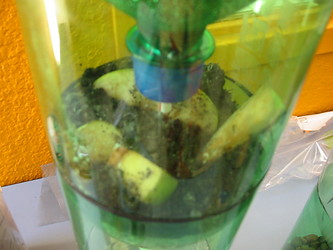
The Decomposition section of the ecobottle in a state of decay.
© 2005
Decomposition
- Day 1: Apples will begin to grow a tiny bit of mold.
- Day 2: The apples will slowly begin to shrink because of the mold that is growing on the apples.
- Day 3: The apples will grow more mold. 1/4 of the apples will be covered in mold.
- Day 4: The mold will cover a little more than 1/4 of the apples.
- Day 5: The apples will shrink one size smaller.
Decomposition- Apples
- Week 1: I think that the apples will be a little brown.
- Week 2: I think that they will be a little more brown and have some mold on them.
- Week 3: I think that the apples will be covered in mold and will have shrunken a little bit.
- Week 4: I think the will be covered in more mold and have shrunken even more.
- Week 5: I think that the apples will be really small and still will be covered in mold.
Terrestrial
- Day 1
- The garden beans will grow, but not much.
- For the basil seeds, nothing will happen.
- Crickets will stay alive.
- Day 2
- Nothing will happen to the garden beans or basil seeds.
- Crickets will stay alive.
- Day 3
- The garden beans will grow a tiny bit more then before.
- The basil seeds will begin to finally grow.
- Crickets will stay alive
- Day 4
- Nothing will happen to the garden beans.
- The basil seeds will grow slightly.
- One Cricket will die.
- Day 5
- Nothing will happen with the garden beans.
- The basil seeds will grow above the ground.
- The 5 crickets will live.
Terrestrial - Basil Seeds
Week 1-Week 5: I think that the basil seeds won't grow at all.
Terrestrial- Garden Bean Seeds
- Week 1: I think that the beans will sprout just a little bit.
- Week 2: I think that it will grow about 2 more inches.
- Week 3: I think that they will grow a couple more inches.
- Week 4: I think that they will start dying.
- Week 5: I think that they will be dead.
Observations
Date: 9/29/05
Time: 1:32pm
Overall impression is that everything looks good. There aren't any plants yet in the terrestrial. The apples have mold on them and the water is getting dirty. The terrestrial is doing fine but nothing is in there yet. Like I said the apples in the decomposition have mold. Nothing really big and exciting yet happing. In the aquatic the water is dirty and some snails seems to be dead, but not sure.
Date:9/30/05
Time:12:50pm
It seems to be the same as yesterday. Nothing happened over the night. We watered the terrestrial about a good 2 or 3 oz. Still mold on apples, maybe if the mold was spread out it would cover 1/4 of the circle. The aquatic is really dirty there are couple of snails floating in the surface. The plants seem to be a stem and the temperature of the water is 24.5 degrees Celsius.
Date: 10/3/05
Time: 1:59pm
There are little differences now in the ecobottle. In every part something happened. In the terrestrial the plants grew a little. So now you can see plants. In the decomposition, the apples have more mold and are turning brown. The mold will probably cover 1/2 of the bottle diameter now. In the aquatic the big snail (aka Slime) died and also the little ones. The water got warmer over the weekend. GOD BLESS SLIME!
Date: 10/4/05
Time: 1:59pm
Looks about the same. The plants in the terrestrial got bigger. One of the crickets dug a hole and the pieces of paper we put in there are halfway gone (we think the crickets ate some of the paper - we had read that crickets will eat paper). The apple in decomposition is smaller and more brown. The mold is going away. The water in the aquatic is still dirty and the plants that are in there look like they are dead. Water is 22 degrees Celsius.
Date:10/6/05
Time:1:45
Things are flowing smoothly and looks good. In all of the sections they look fine. Plants got taller and crickets seem to be fine. Apples are still brown and still have a little mold. There is a tiny root growing out of the lid from the terrestrial. Most of the plants are dead in the aquatic. Snails are dead and water is dirty but it hasn't got dirtier than before.
Date: 10/7/05
Time: 1:33pm
It seems to be fine. Looks the same. Plant hitting the top and only three crickets could be seen. Two scraps of paper are seen also. Apples are still brown and getting smaller. The root that was growing out of the lid stopped growing and there was mold growing out of the holes in the lid. Nothing is happening in the aquatic. Plants floating and are just stems.
Date: 10/10/05
Time: 1:42pm
Everything is the same. Bigger plants and only one cricket can be seen, don't know where the others went. Apples are the same and mold is growing out of the straw. Aquatic is the same as before; nothing new.
Date: 10/11/05 & 10/18/05
Time: 2:00pm
Same old, nothing new. Can't see the crickets, the leaves are dying, and mold is growing in the terrestrial section. Decomposition is the same, nothing new, same as the aquatic. On the 18th the water was 25 degrees Celsius and the ph level was 8.
Date: 10/21/05
Time: 12:50pm
Looks good. Leaves are dying like before, mold is growing on the plants and we don't see any crickets. Brown apples with a little mold. Things are floating in the water.
Weekly Temperature and pH Chart
| Date | Temperature | pH level |
|---|---|---|
| 10/18/05 | 25 °C | 8 |
| 10/21/05 | 25 °C | 8 |
| 10/25/05 | 24 °C | 8 |
| 10/27/05 | 24 °C | 8 |
| 10/28/05 | 25 °C | 8 |
| 10/31/05 | 26 °C | 7 |
| 11/1/05 | 25 °C | 7 |
| 11/2/05 | 25 °C | 8 |
| 11/3/05 | 26 °C | 8 |
Analysis
Venn Diagram
How Many Different Kinds Of Organisms Survived In All The Ecobottles?
- Snails-0
- Snail Eggs-0
- Ground Beetles-0
- Maggots-0
- Crickets-3
- Meal Worms-0
- Fruit Flies-0
- Scorpions-1
- Grasshoppers-0
Timeline of Organism Survival and Ideas About Life in the Ecobottle
10/10/05
- What animals are currently living in your ecobottle?
- Crickets and hopefully some snails.
- What plants are currently living in your ecobottle?
- Garden beans and basil seeds.
- What animals have died in your ecobottle?
- Snails.
- What plants have died in your ecobottle?
- Algae
- How many times have your opened the ecobottle?
- None.
- What did you add?(be specific- add dates and times)
- Crickets on October 3, 2005 at 1:20 pm.
- What did you take out?( Be specific- add dates and times)
- Water; Friday September 30, 2005
- What has surprised you the most about your ecobottle?
- The plants
- What do you think will be the biggest change in your ecobottle between now and Friday 10/14/05?
- The plants
R.I.P Timeline
- Snails gone 2 1/2 weeks in.
- Plants - Week of 11-14-05
- Crickets - Missing in one week.
Conclusion
In conclusion, our ecobottle did somewhat well. Over of the months we worked on it here in science class, it was fun. Many outcomes of the ecobottle were different than we expected. But it still puzzles us how our crickets went missing. Even when we took apart the ecobottle, there were no crickets. So this is a mystery about which we will all be curious. Overall, we did pretty well, but next time I think that we would add more crickets and food for them. Mainly your success really depends on how well you take care of your ecobottle.

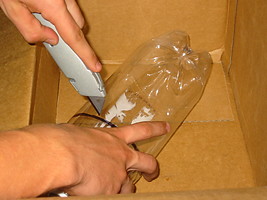
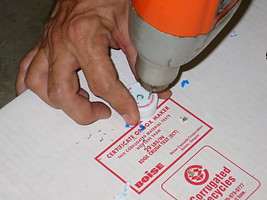
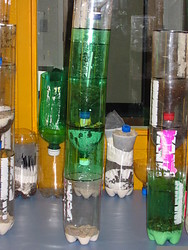
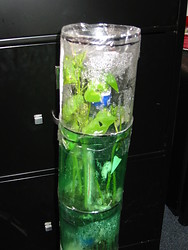
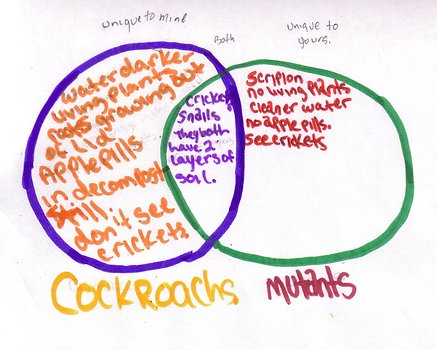
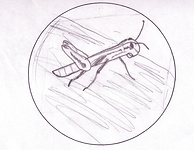




 Go to quick links
Go to quick search
Go to navigation for this section of the ToL site
Go to detailed links for the ToL site
Go to quick links
Go to quick search
Go to navigation for this section of the ToL site
Go to detailed links for the ToL site